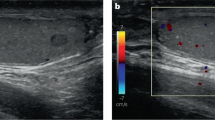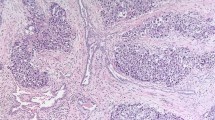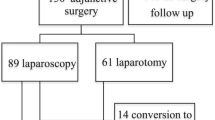Abstract
Residual retroperitoneal masses may remain after chemotherapy for metastatic non-seminomatous testicular cancer, which harbour residual tumour or totally benign tissue (necrosis/fibrosis). These residual masses may be effectively removed by a surgical resection. We evaluated current selection criteria and tried to develop alternative criteria in a data set of 544 patients, who had retroperitoneal lymph node dissection of residual masses. Six resection policies were identified from the literature. Two alternative policies were developed with logistic regression analysis. Evaluation of the policies focused on the true-positive rate (resection in case of tumour), and the false-positive rate (resection in case of necrosis). It appeared that most current policies use the size of the residual mass (> or = 10 mm or > or = 20 mm) as the predominant selection criterion. This resulted in high true-positive rates (most > 90%), but false-positive rates between 37% and 87%. The alternative policies included five well-known predictors of necrosis in addition to residual mass size (primary tumour histology, prechemotherapy levels of the three tumour markers alphafetoprotein (AFP), human chorionic gonadotropin (HCG) and lactate dehydrogenase (LDH) and mass shrinkage during chemotherapy). This strategy resulted in improved true- and false-positive rates, even when categories of the predictors were simplified for practical application. We conclude that a simple statistical model, based on a limited number of patient characteristics, provides better guidelines for patient selection than those currently used in clinical practice.
This is a preview of subscription content, access via your institution
Access options
Subscribe to this journal
Receive 24 print issues and online access
$259.00 per year
only $10.79 per issue
Buy this article
- Purchase on Springer Link
- Instant access to full article PDF
Prices may be subject to local taxes which are calculated during checkout
Similar content being viewed by others
Author information
Authors and Affiliations
Consortia
Rights and permissions
About this article
Cite this article
Steyerberg, E., Keizer, H., Fosså, S. et al. Resection of residual retroperitoneal masses in testicular cancer: evaluation and improvement of selection criteria. Br J Cancer 74, 1492–1498 (1996). https://doi.org/10.1038/bjc.1996.571
Issue Date:
DOI: https://doi.org/10.1038/bjc.1996.571



